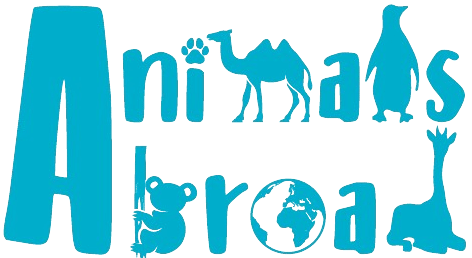Botswana’s National Parks have intentionally remained rural. This allows for some of Africa’s best viewing opportunities because the animals roam free. Be aware that there is always the possibility of animals wandering into the campgrounds to join you.
Linyanti and Savuti campgrounds (Chobe National Park) and the Khwai campground (Moremi Game Reserve) are part of the same campground chain called SLK. These campgrounds are located inside the parks therefore, additional Park Fees apply to all three.
Chobe National Park
Chobe National Park, tucked into the northern corner of Botswana, is a wild place in every sense of the word. Spanning over 11,000 square kilometers, it’s divided into four distinct regions—Chobe Riverfront, Linyanti, Savuti, and the Ngwenzumba Pans—each offering its own adventure.
Curious about the wildlife in Chobe National Park? Learn More:
• Into the Wild: Chobe National Park with Kids
• Sunset Cruise on the Chobe River: A Photo Journey
Linyanti Campground, Chobe National Park
With a woodland landscape, Linyanti features lush floodplains and lagoons. It’s home to a large concentration of lions, leopards, and wild dogs. The area is also famous for its massive elephant population, which migrates along the Linyanti River during the dry season.
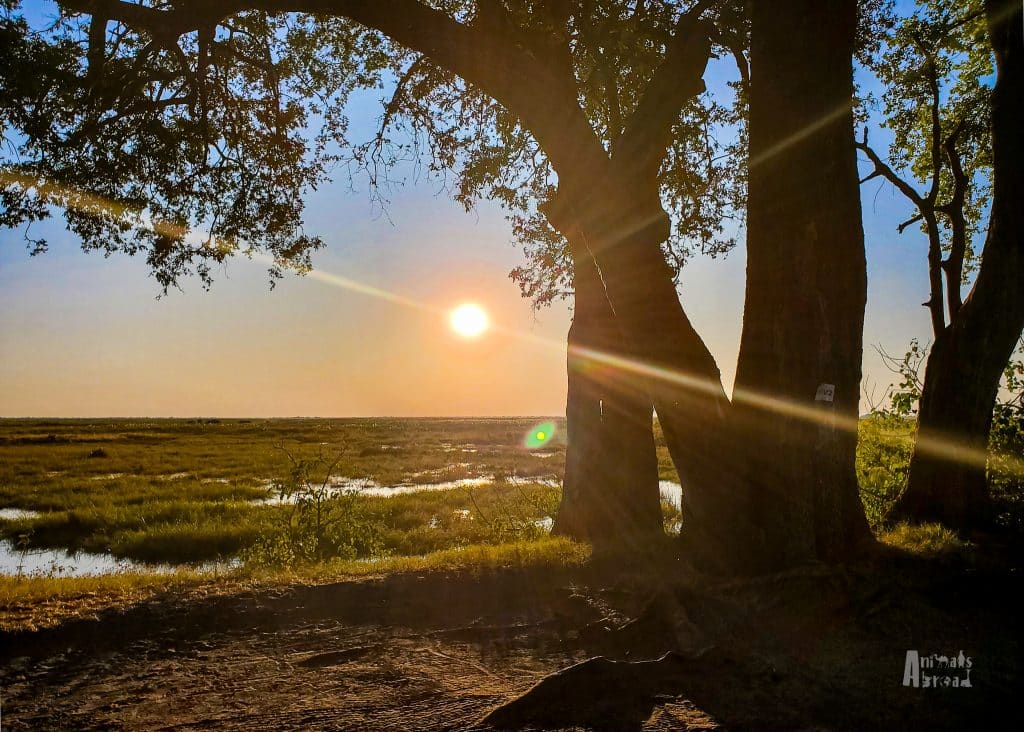
The campsites in Linyanti overlook the vast marshlands where elephants frequently visit to graze and cool off. For the best wildlife sightings, pull up a camping chair and wait for the animals to come to you.
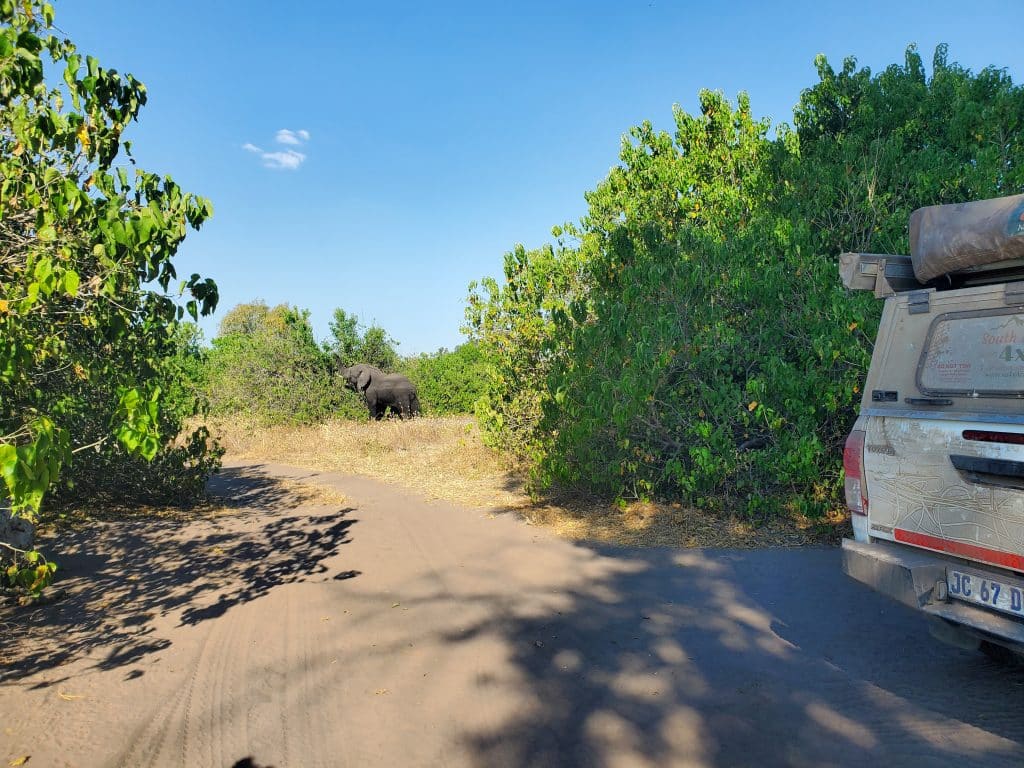

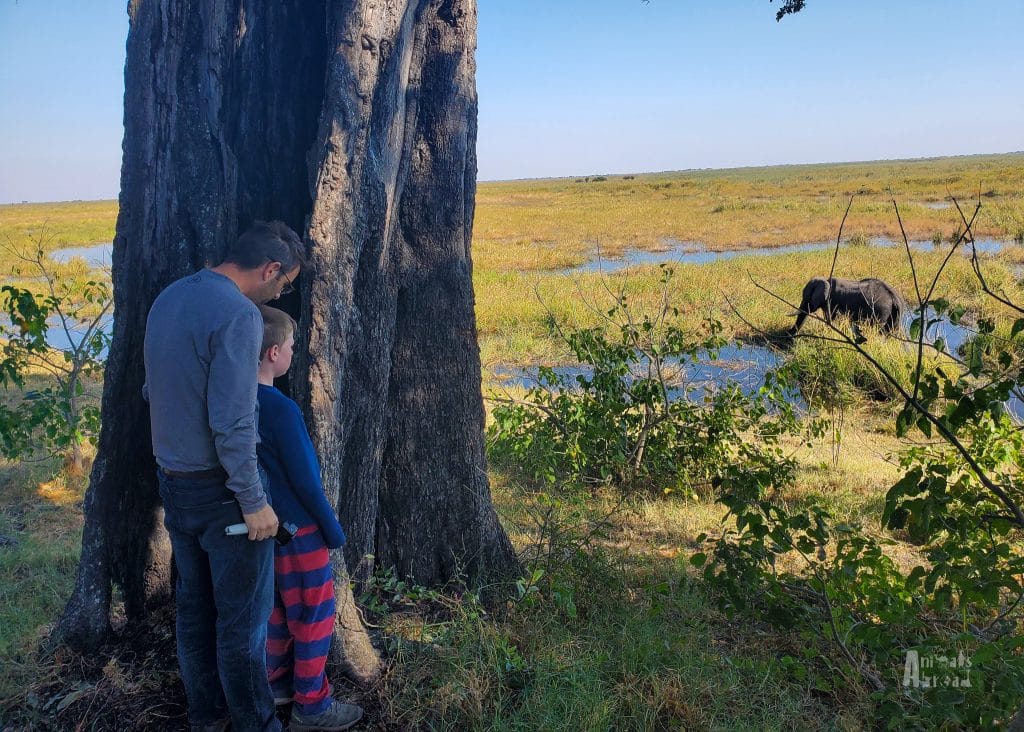
The sites at Linyanti were large and private, surrounded by trees, with views over the floodplains. It felt like we were the only campers there. Water was available on-site, but there was no power. The ablution facilities were clean, although hot water for showers was inconsistent—there was no hot water during our three-day stay. There was no Wi-Fi, restaurant, lodge facilities, or guided game drive.
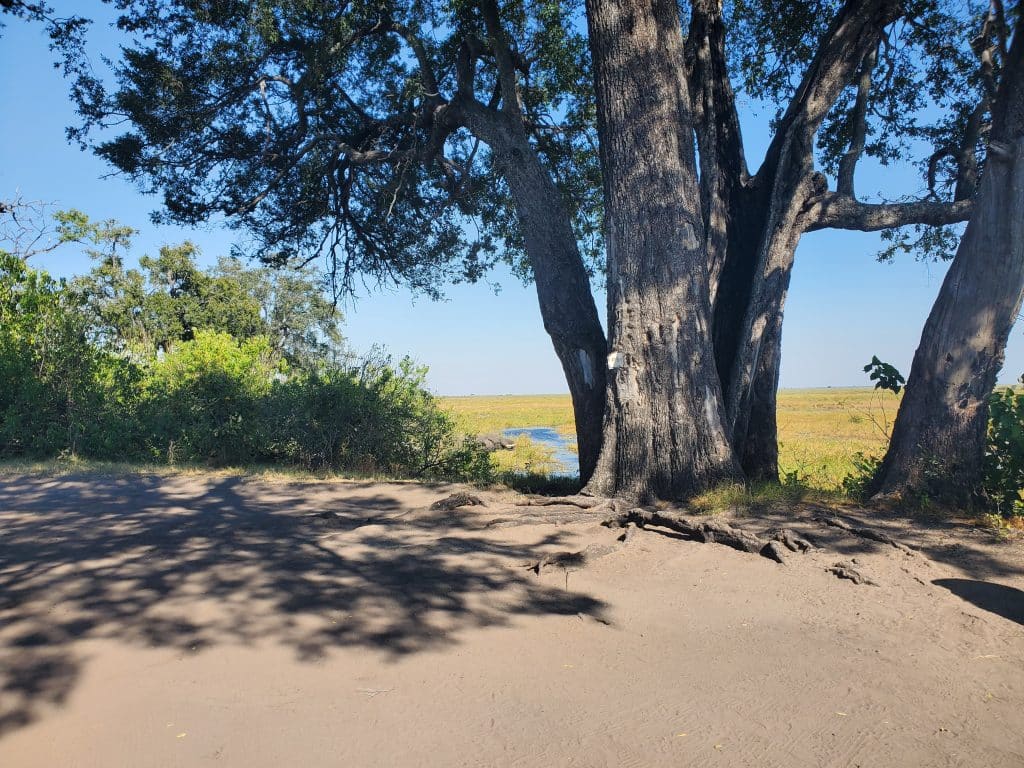
Safety Tip: Baboons are common in the area. When you leave camp, ensure you put your tent down and leave nothing outside. Lions are known to enter the campground at night—we saw many paw prints around our truck in the morning. Avoid walking to the ablution stations after dark. Elephants roam the camp at all hours—some can be aggressive, as poaching is still a concern in this area.
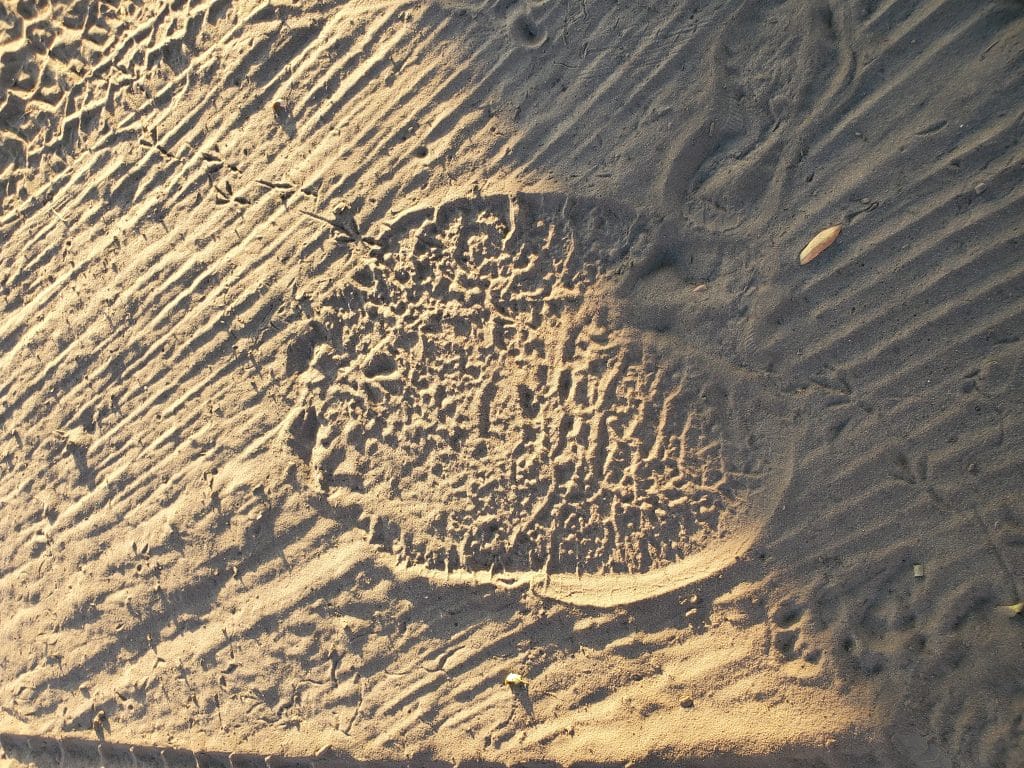
Savuti, Chobe National Park
The Savuti area is vast, with various terrains, from forested areas to open grassy savannahs with waterholes. Several trails take you close enough to observe and photograph the game.
The Savuti campsites were large and shaded by trees but close together, with limited privacy. Water was available on-site, but there was no power. The deep sand on the sites made setting up our tent ladder tricky, and it felt like we were camping on a beach. The ablution facilities were clean, with multiple showers and toilets. Hot water was available, though intermittent. Laundry services and wash sinks were available for self-laundry. A restaurant and lodges were on-site, and Wi-Fi was available at reception.
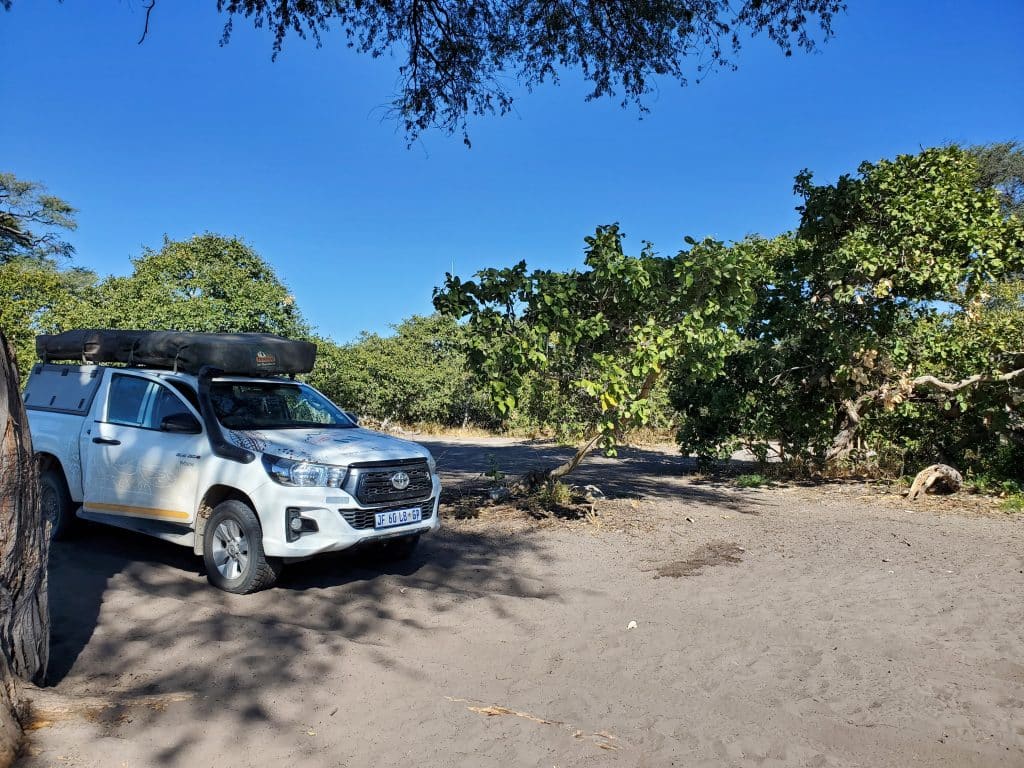
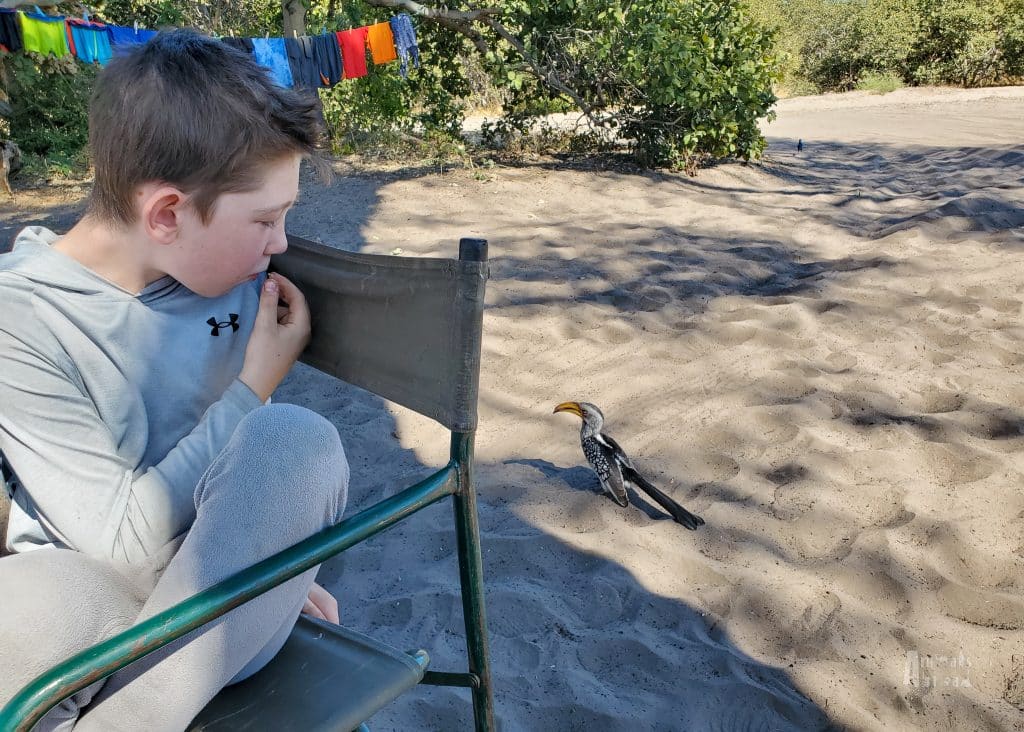
Safety Tip: Avoid walking at night the ablution station due to the possibility of game, including large cats, nearby. One evening, around dinner when the campground was still lively, Derek and Mason spotted a leopard crouching in the bushes about 15 meters away, while walking to the bathroom. We later learned that the same leopard had passed through a neighbouring campsite just moments earlier.
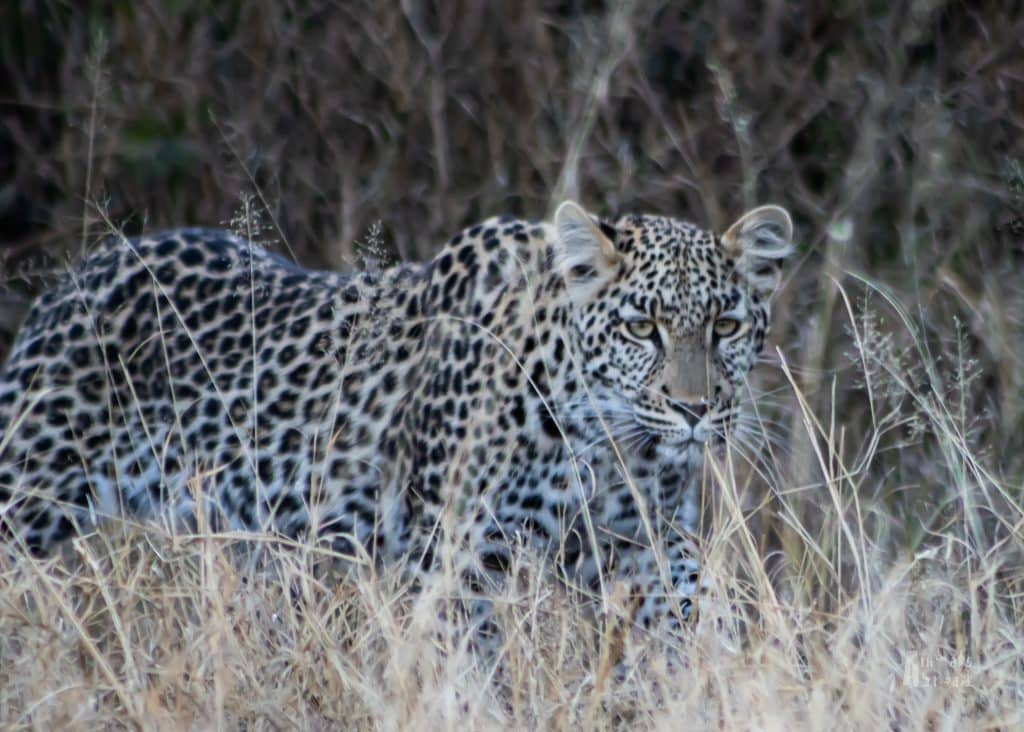
Khwai, Moremi Game Reserve
Moremi Game Reserve offers the chance to see some of Botswana’s most endangered species, including wild dogs and both white and black rhinos. Located south of Chobe National Park and within the Okavango Delta, Moremi’s beautifully diverse landscape features grasslands, forests, floodplains, and lagoons. Unlike national parks, Moremi is designated as a game reserve and is home to the BaSarwa people.
Learn More about our Wildest Day in Chobe: Our Best and Worst Day on Safari.

The Khwai campsites were well-spaced, shaded with trees, and offered plenty of privacy. Water was available onsite, but there was no power. The ablution facilities were clean, with multiple showers and toilets. Hot water was available intermittently. No lodges or restaurants, and no Wi-Fi, or guided game drives available.
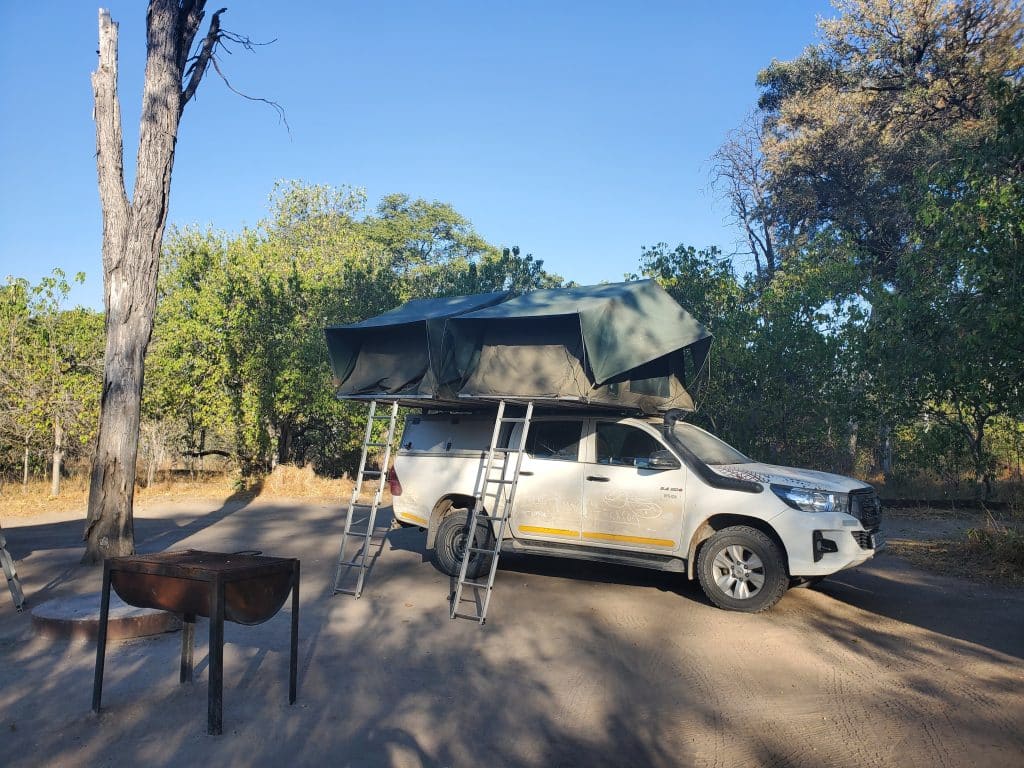
Safety Tips: Be cautious of curious monkeys that will surround the campsites when food is out and will attempt to steal anything they can. Driving to the ablution stations after dark was recommended, no matter how close your campsite is to the facility, as lions prowl the campground at night. We did not see any lions; however, one night, just as we were about to get out of the truck to get ready for bed, we turned on the headlights to find a large spotted hyena lurking in front of us. It quickly vanished into the brush when the lights came on.
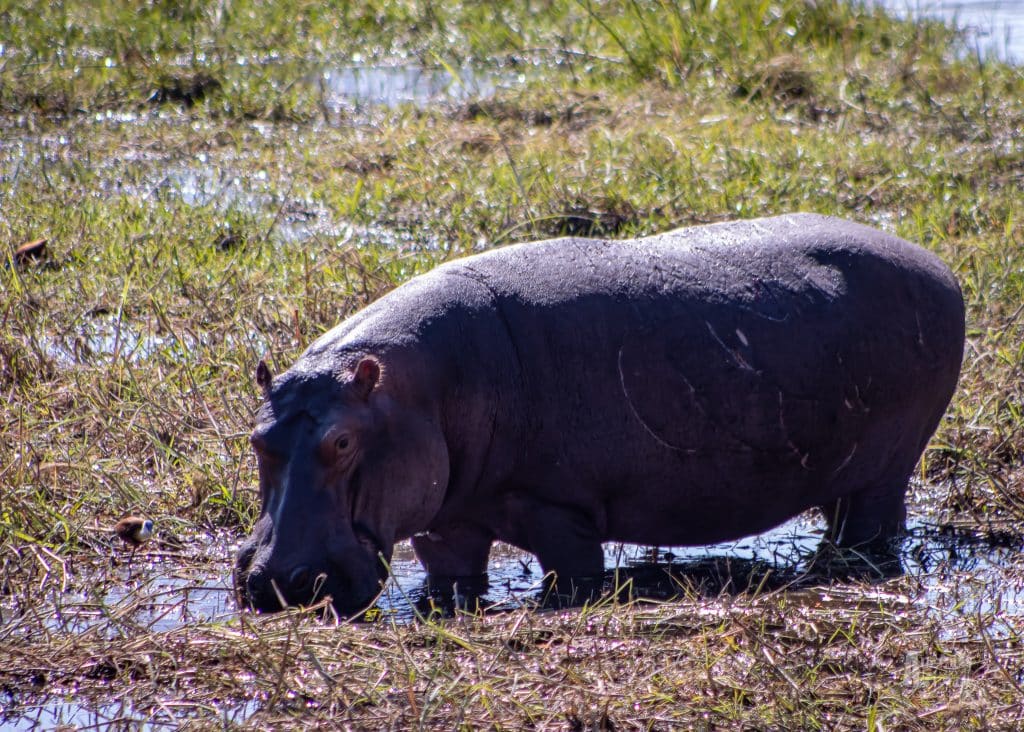
One of our favourite spots in the reserve was Hippo Pond, located near the Khwai campground. This large pond, which resembled a small lake, sat in the middle of expansive grasslands. From the lookout structure, you can see dozens of hippos bobbing up and down in the water, showing off their little ears and large snouts.
Ready to Start Planning Your Safari Adventure?
Check out these related posts to help plan your trip:
- 51-Day Africa Safari – Part 1: South Africa & Namibia’s Coast
- 51-Day Africa Safari – Part 2: Namibia’s Etosha & Caprivi Strip
- 51-Day Africa Safari – Part 3: Victoria Falls & Botswana
- Our Best and Worst Day on Safari
- Camping Safari in Africa: Know Before You Go
- Camping Across Southern Africa: A Rundown of our Safari Campsites
- Navigating Border Crossings in Southern Africa
- Safari with Kids: Tips from the Road
- Etosha NP with Kids: A Family Safari to Remember
- Exploring the Caprivi Strip with Kids
- Okonjima Family Safari: Where the Wild Things Wait
- The Smoke that Thunders: A Trip to Victoria Falls
- Into the Wild: Chobe NP with Kids
- Sunset Cruise on the Chobe River: A Photo Journey
- Living Giants: A Photo Journey Through Nxai Pan National Park
